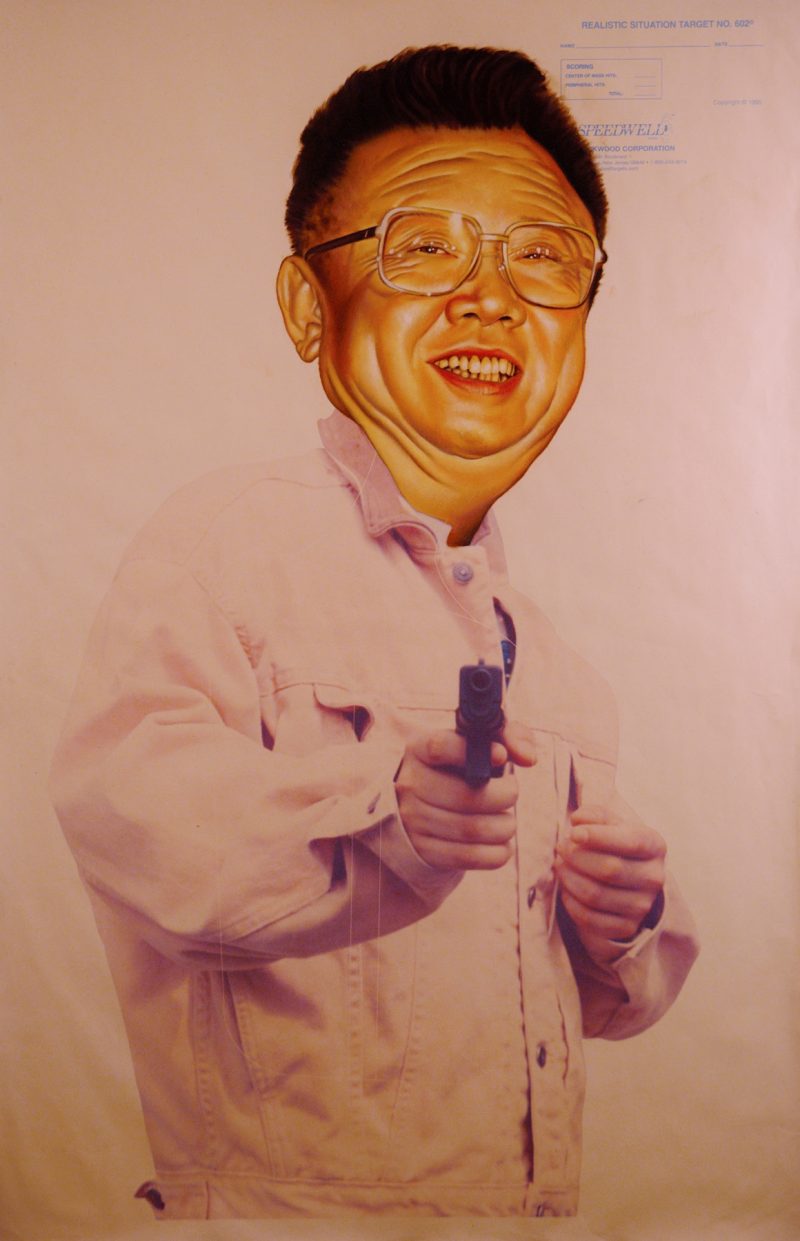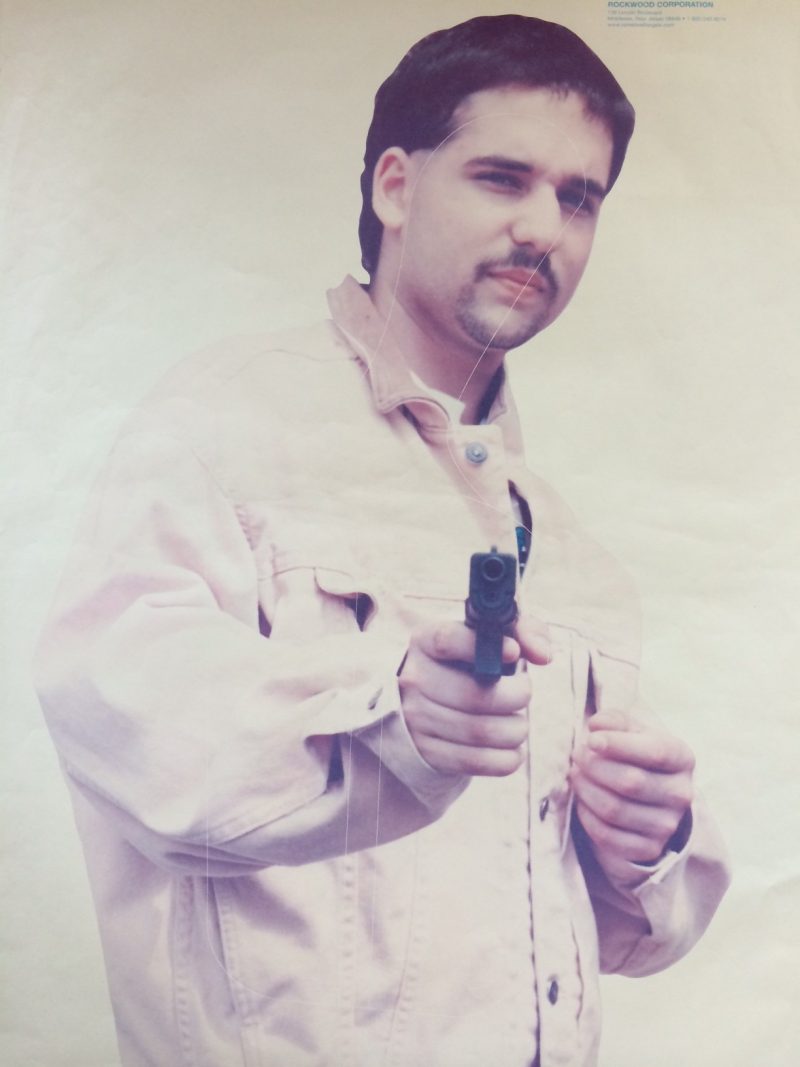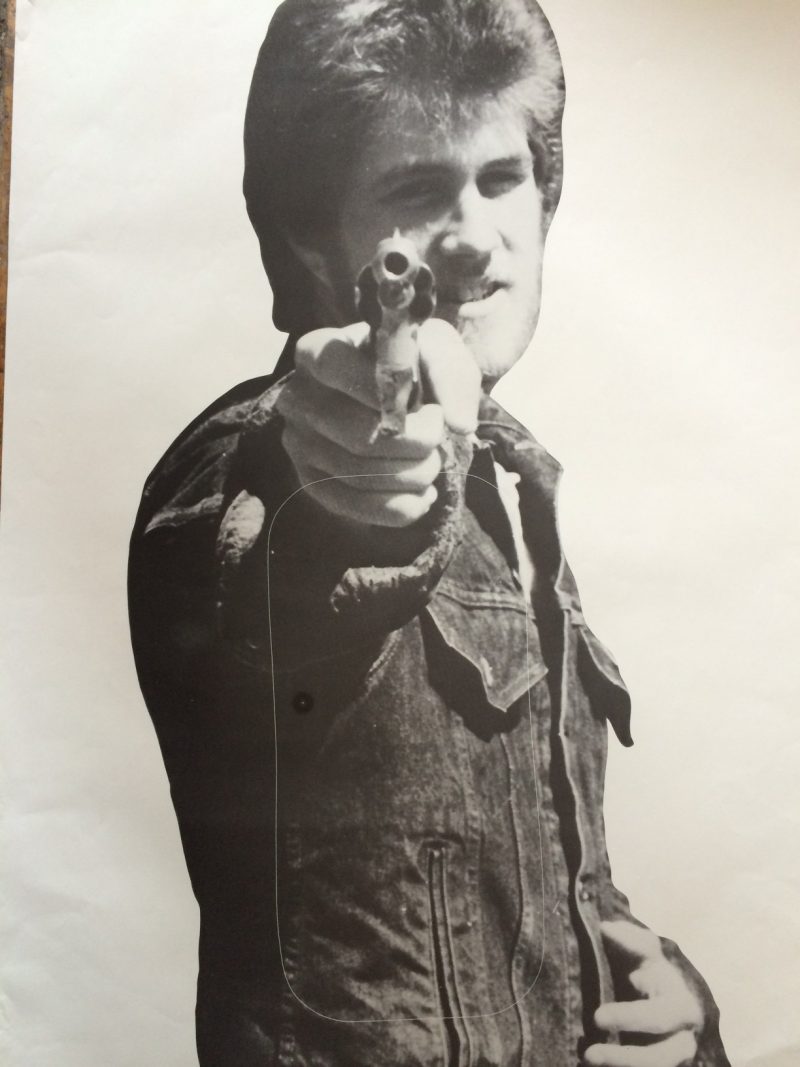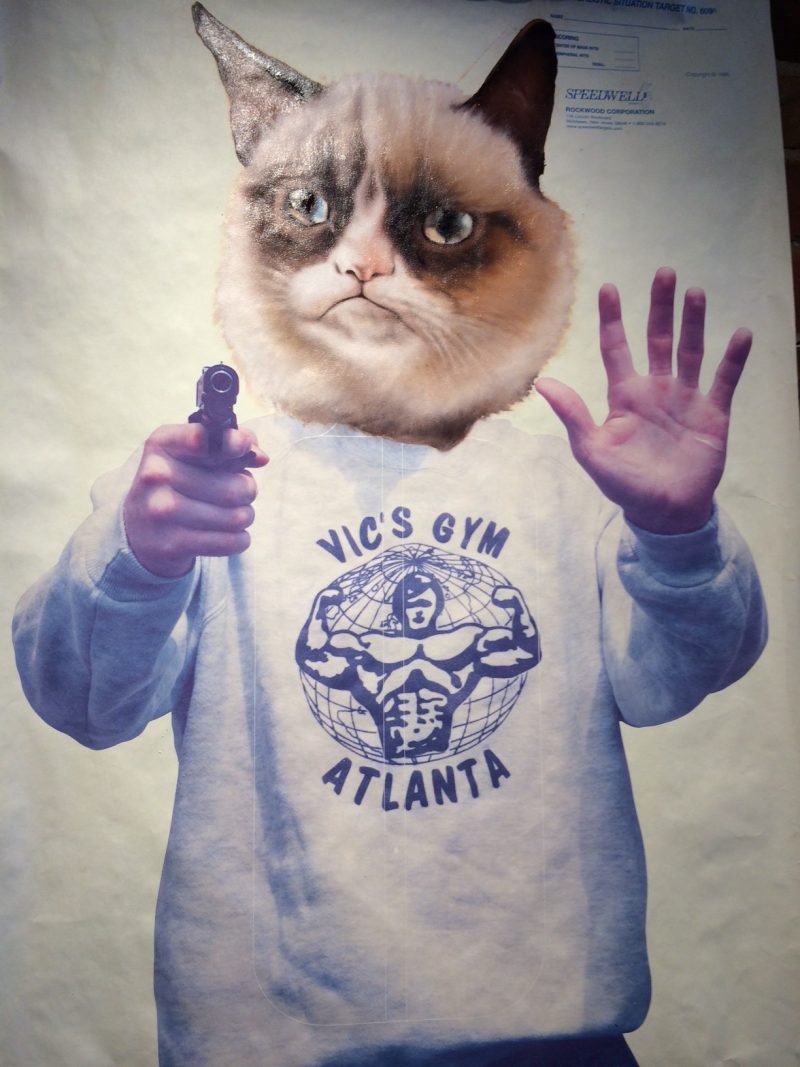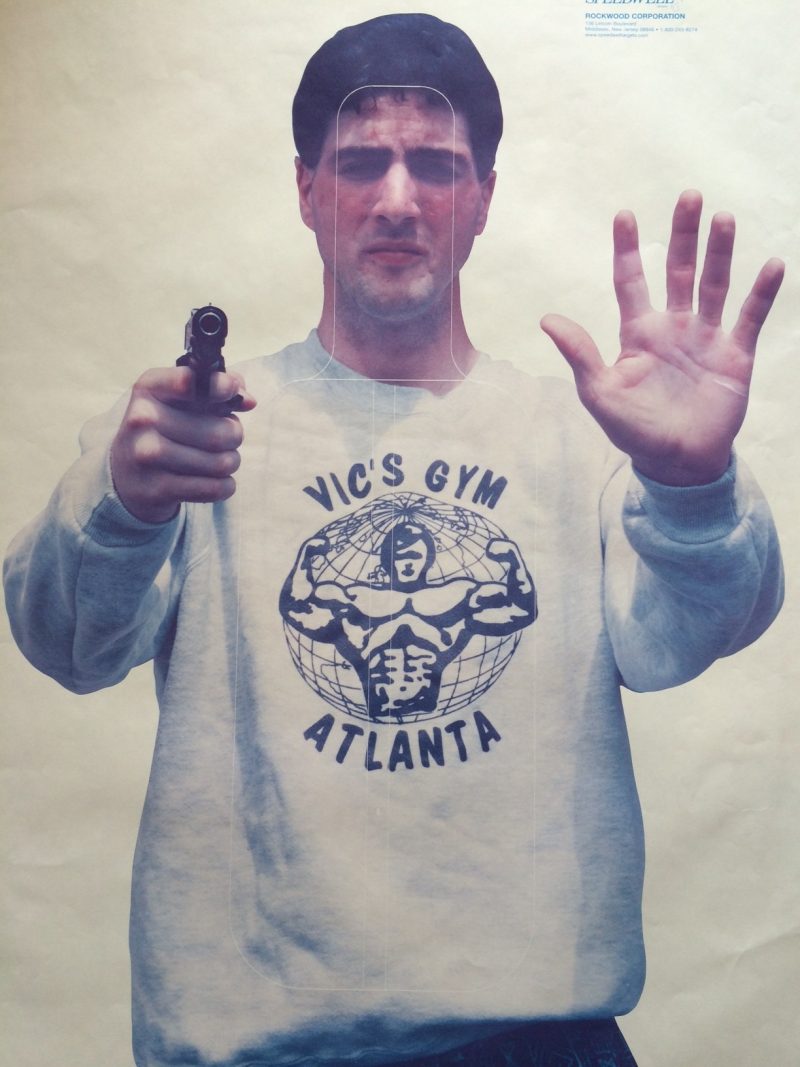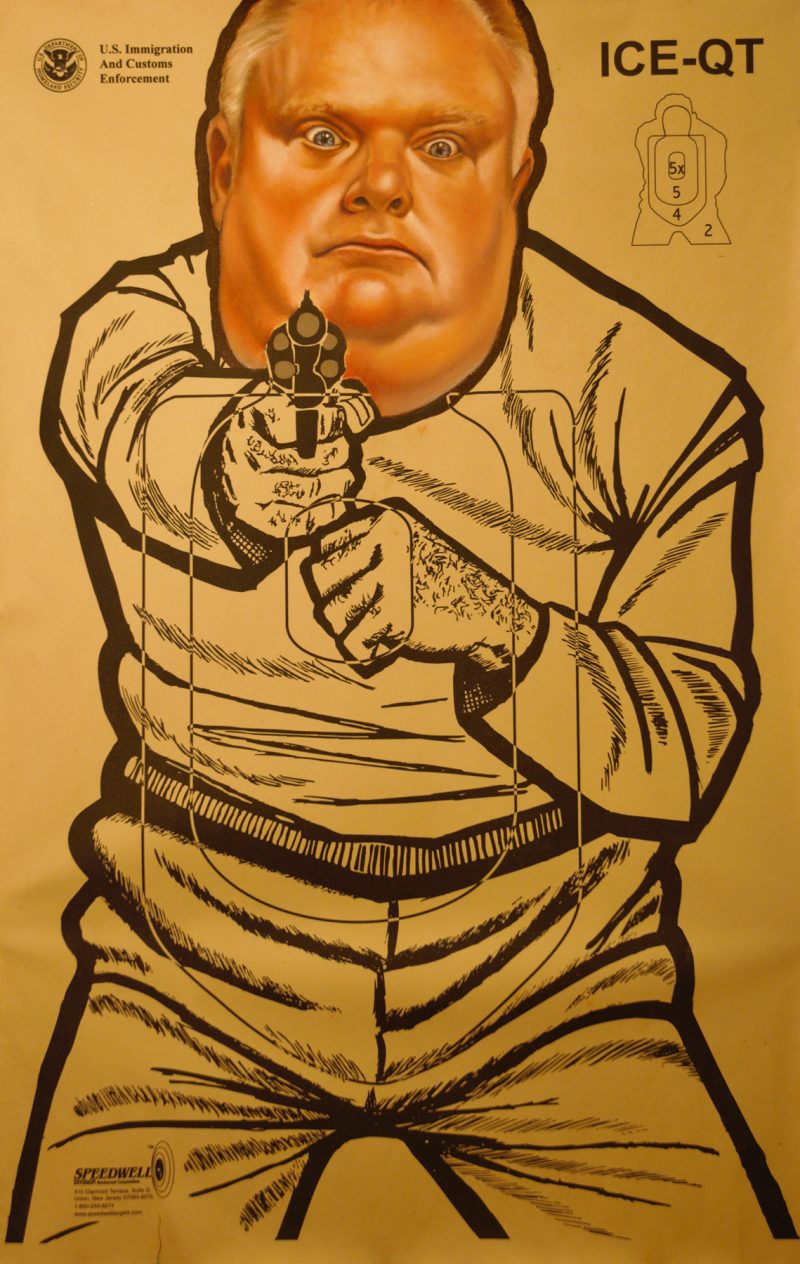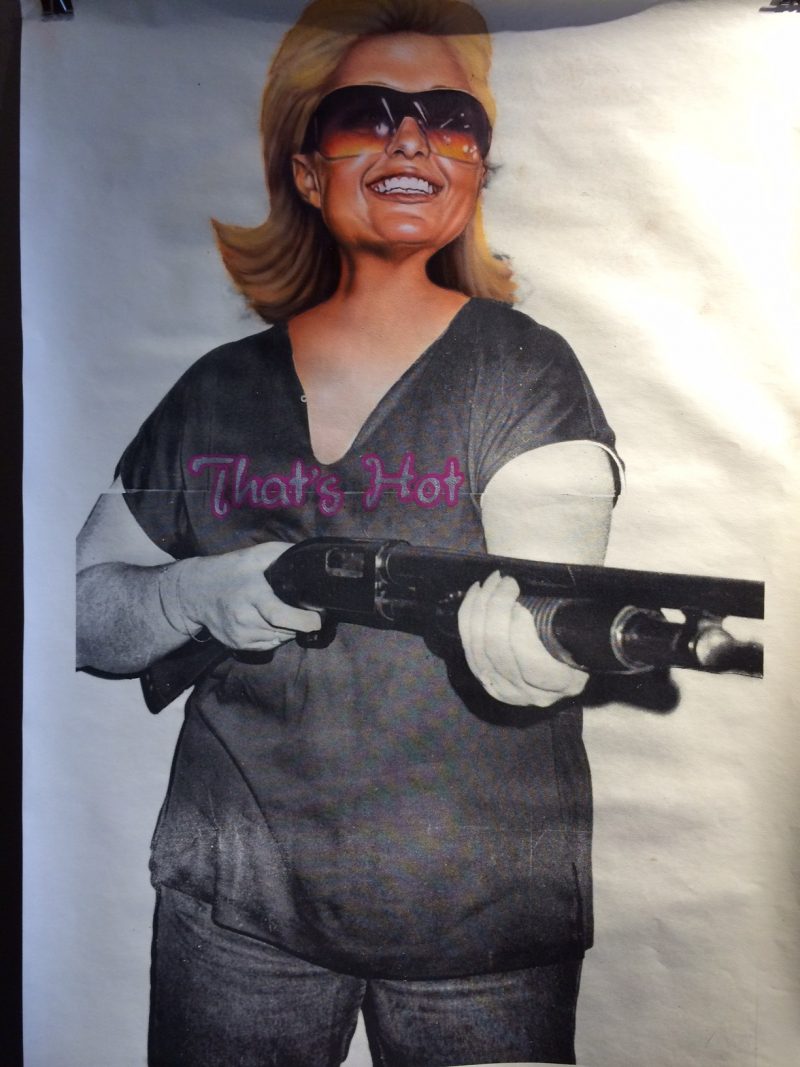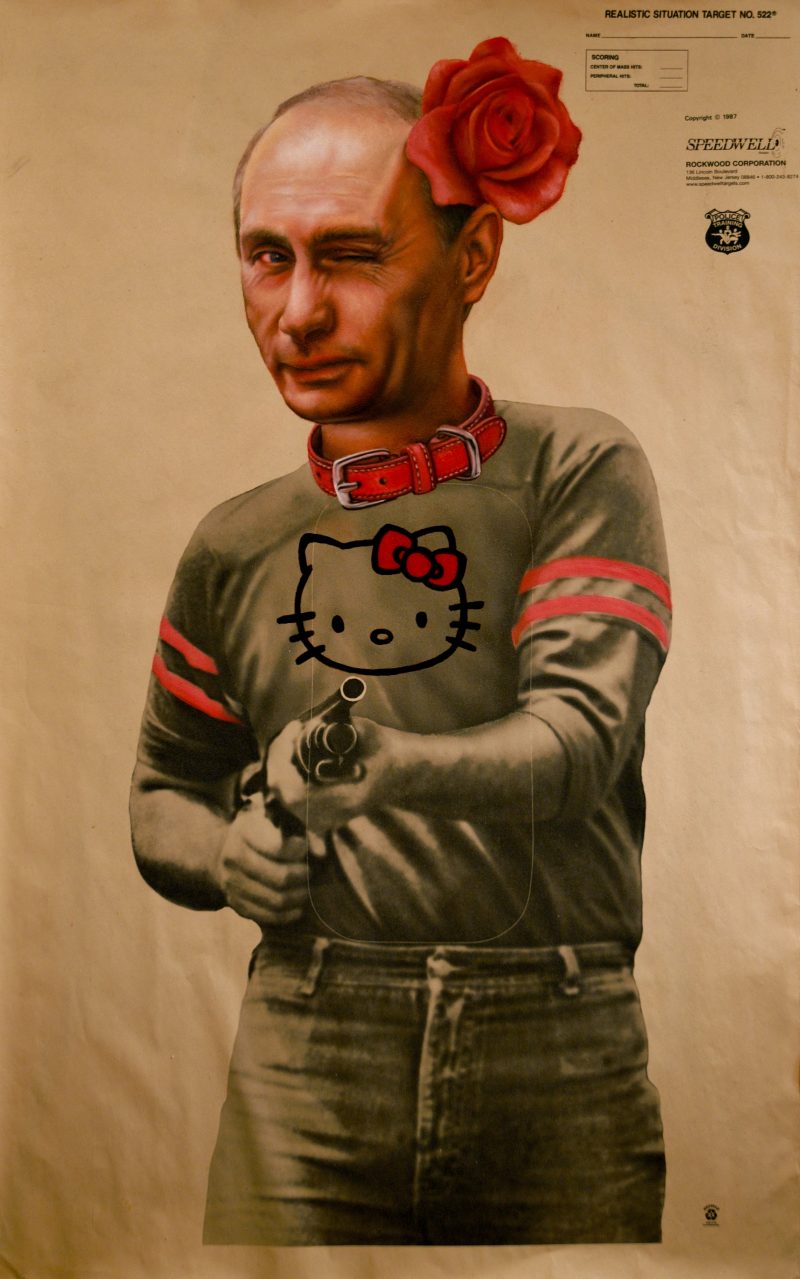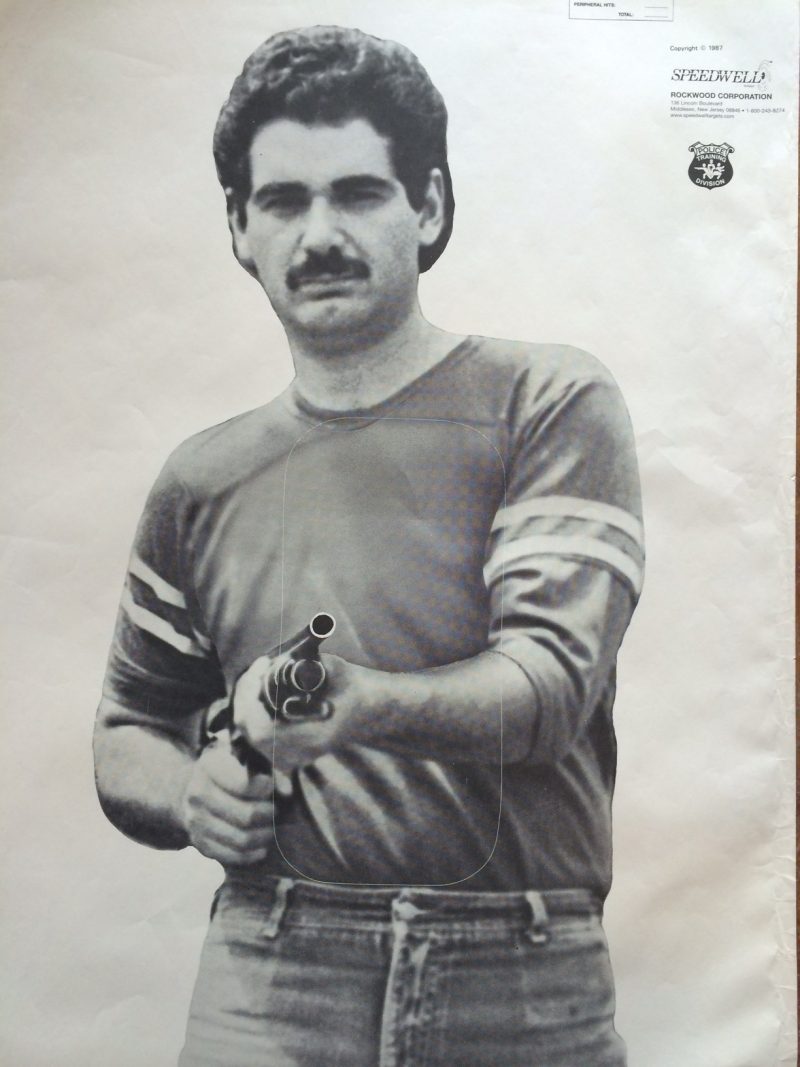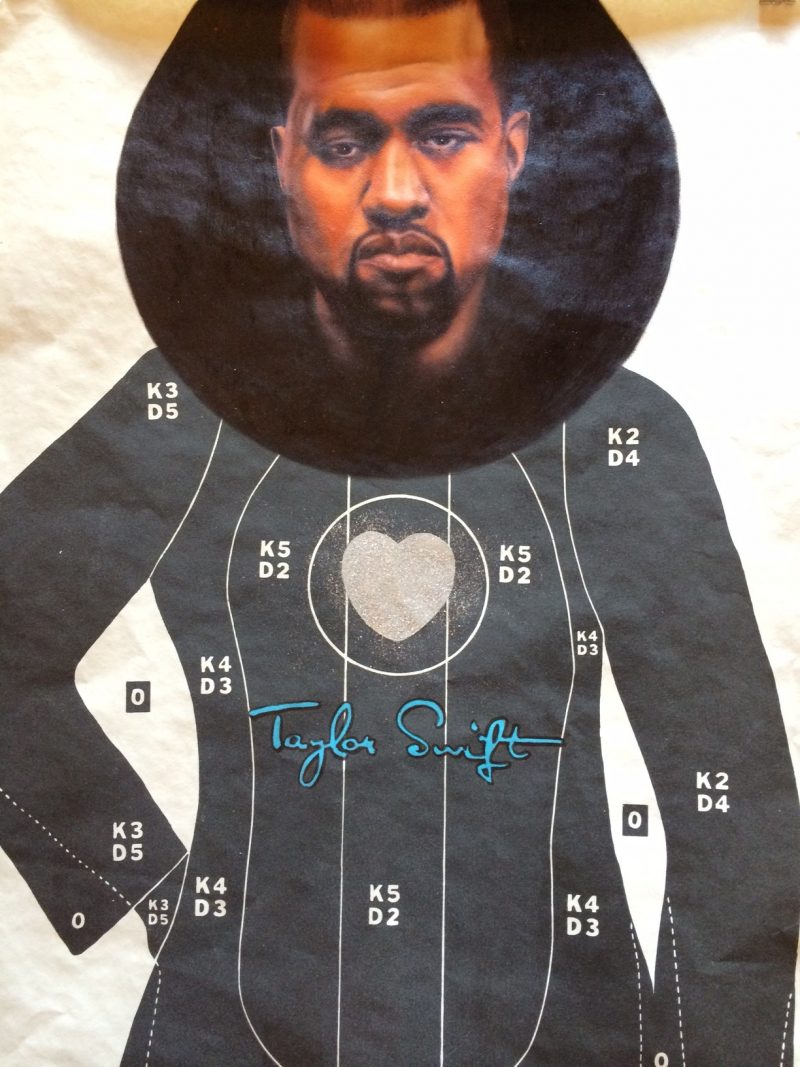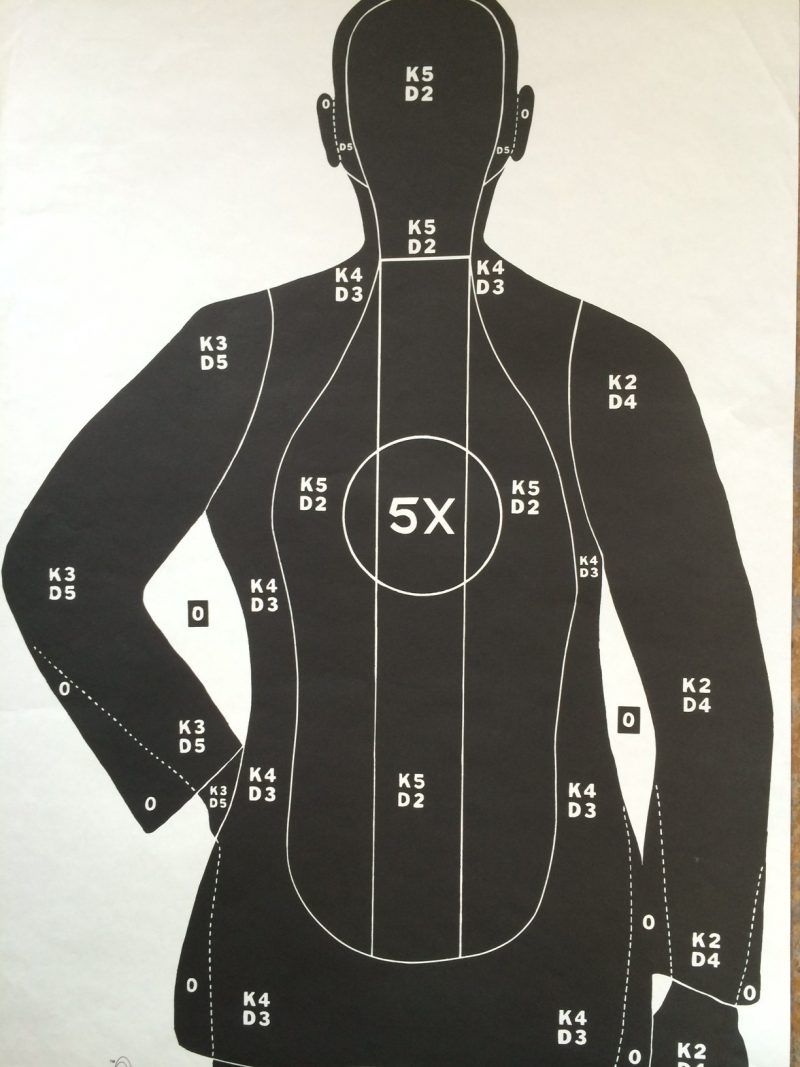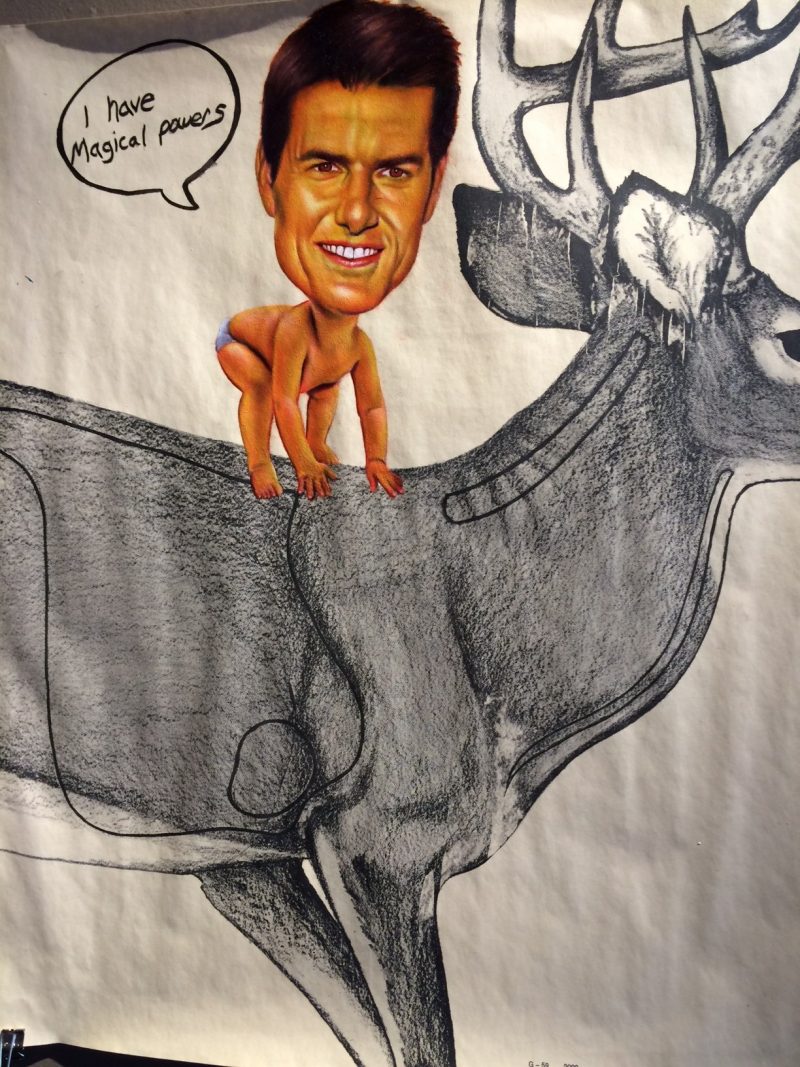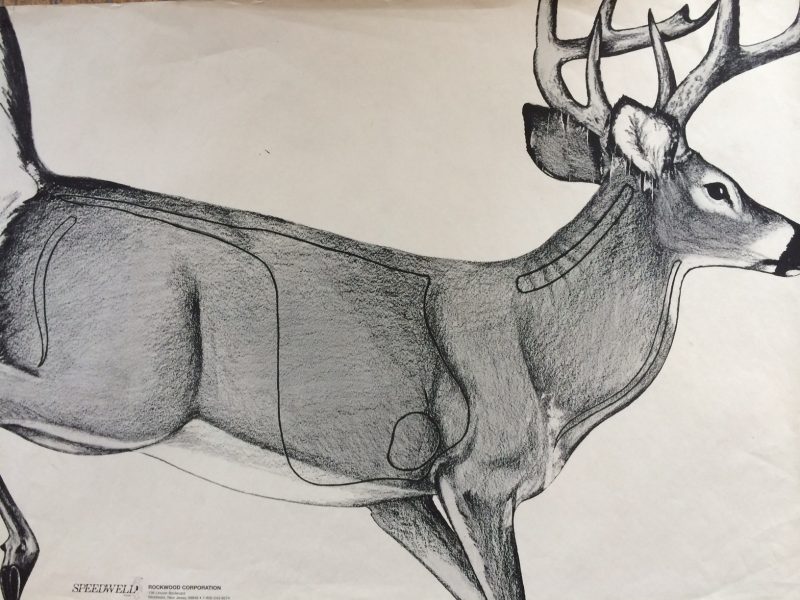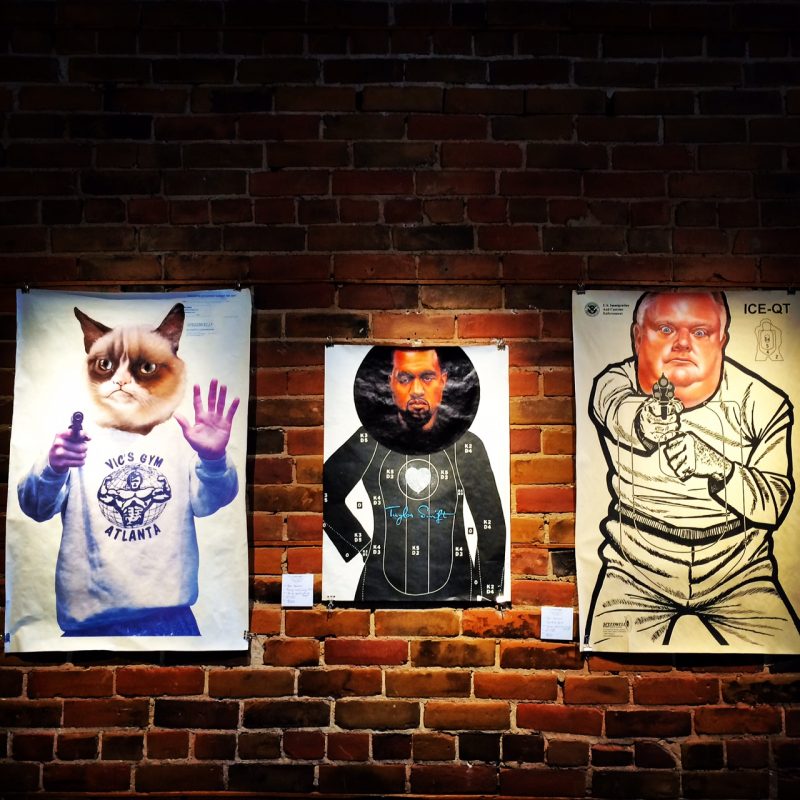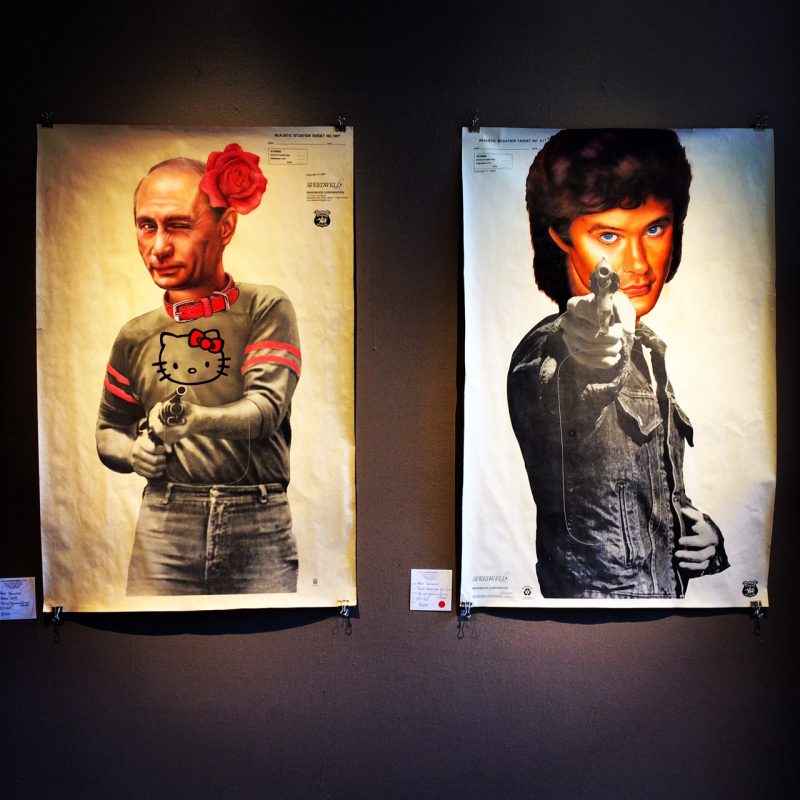July 2014
La Petite Mort Gallery presents
Shoot Me, Please
Vintage Shooting Range Target Posters, re-envisioned by Peter Shmelzer
Curated by Adam Barbu & Guy Berube
July 4 – 27 , 2014 / Vernissage Friday July 4 / 7 – 10pm
Curatorial Statement
The impulse to mark is in essence a violent one. And the preemptive strike of the transference of thought onto material is not unlike the travelling of a bullet. This is not to say catastrophic or murderous. But rather, that the artistic gesture begins from along an impossible, always already gone, euphoric moment before actions have consequences.
Not unlike the symbolic space of the art gallery, the shooting range enacts a particular form of perceptual mediation, strategically held one remove away from the real. Shoot Me, Please attempts to complicate these terms.The exhibition traces an artistic intervention by Peter Shmelzer onto 8 vintage New York City shooting range posters specially selected from La Petite Mort Gallery’s private collection. The works map a space for competing forces of (un)reality: in situating Shmelzer’s distinct form of surrealist hyperrealism onto the target, we flirt within the space of the double negative. The simulated is the real. No surface is mundane or apolitical.
Sontag writes that there is no such thing as a purely collective public imagination, but rather a sphere of social regulation from which certain forms figure a (falsely) imagined, cohesive public desire. Thus the faces that Shmelzer paints bring with them the symbolic weight of disembodied, fragmented ‘characters’ along a sanctioned, yet blurred cultural memory. Shmelzer’s figures perform themselves in a kind of transcendental space as always already unreal. And it is along the fault lines of this slight rhetorical displacement that they become real again.
At its heart, Shoot Me, Please considers the ways in which art offers a space for refuge and resistance to the contexts in which materials and objects of vision are said to belong, and as such, questions the ways in which they very practice of art exists beyond the logic of physical violence
The firing of a gun into ‘safe’ space is not simply just that – it operates to satisfy the desire to do otherwise. Where does ‘practice’ end and ‘action’ begin? The first gesture onto the paper, or the aim towards the practice target, would seem to provide an orientation of the body that is perhaps without direct consequences. By the paradox of social existence itself, we fall along the cracks of the name of the letter we so seamlessly reproduce. The logic of measuring such beginnings and ends falls. It dries up and must be un-read. The figure of the target exists to be interrupted.
At its best, the spirit of art is ‘violent’ in that it refuses proper language. This consideration is not meant to retrace an idea of cyclical creation in destructionor destruction in creation, but rather, an always continuing, deferring, resistant process of creation. To abide by the former – the conventional creation/destruction binary – is to retrace the all-to-familiar cultural rhetoric of ‘terror’ or ‘pure evil’ that necessarily operates to refuse and escape further definition. In the space of art, we can un-write the narrative. Thus the ‘deferral’ of absolute meaning is the only necessary logic of resistance – a way to step outside of binary thinking. Mediums exist to be penetrated.
In such a way, Shoot Me, Please works on a decided antagonism against the proliferation of self-congratulatory private and public cultures of violence (in which we are absolutely complicit). Whether this frames actual ‘growing trend’ violence, or whether it is only a matter of discussion because of our new access to information (our ability to know that it is happening) is not of issue here. This problem is not new, and permeates deep into the cultural fabric. By pitting the base value of ‘simulated’ violence in dialogue with the artistic instinct to mark, Shoot Me, Please works to unearth, in the most basic sense – of form – the social norms that educate our cultural of violence in the first place.
Thus, of central importance to the exhibition lies the very idea of ‘disembodied’ violence. Today, it seems obvious that we are increasingly detached from consequences of our physical actions. But are we not approaching a different stage, having moved so far along in the process of the technologized extension of ‘self’, that disembodied simulations actually begin to feel like embodiment again – because we are able, with new critical capacity, to be reflexive on this very notion? Shoot Me, Please works on an idea that we may be alienated, but are never ‘not there’. Let us not forget that we can still feel at a remove.
The supposedly unviolated space is a space that waits – in whichever capacity. However, it remains that the form in which a given gesture becomes manifest is always already absorbed and written by the structural restrictions of language, exercised along a historical axis of cultural attitudes. From a broader view, this ‘limit’ frames the exact issue we face when talking about our aesthetic evaluations. Thus the subsequent trajectory of the ‘violent’ mark can only be productive in changing the stakes of the binary logic of creation/destruction, good/evil, liberated/regulated.
‘Revenge’ is a phallus-y. Its manifestations are symptomatic of collisions along the unresolved (read: unresolvable) burdens of history that we carry into the present: at once conscious and unconscious, in material and memory, of our own and of others. An act is never simply simulated. And consequences are never centralized. The bullseye melts beyond its own marked boundary.
– Written by Adam Barbu
